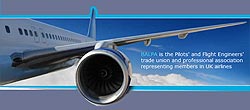Strict regulations will need to be introduced before large drones are allowed to appear in the UK's skies, the pilots union BALPA has said.
Commenting after a near collision between a drone and a plane landing at Heathrow, the union said the remotely piloted craft were putting passenger jets at “real risk”
The pilot of the Airbus A320, which can carry up to 180 passengers, spotted the drone when the jet was travelling at an altitude of 700ft on its approach to the runway at the UK’s busiest airport.
In a report published this week, the Civil Aviation Authority (CAA) gave the incident in July an “A” rating, meaning there was “serious risk of collision”. BALPA had told a House of Lords committee in October that “safe drone zones” were needed to protect planes.
 Commenting after the publication of the report on the Heathrow incident, the union said that the rapid increase in the number of drones operated by amateur enthusiasts now poses “a real risk” to commercial aircraft.
Commenting after the publication of the report on the Heathrow incident, the union said that the rapid increase in the number of drones operated by amateur enthusiasts now poses “a real risk” to commercial aircraft.
The union’s general secretary, Jim McAuslan, said drones could cause a repeat of the “Hudson River experience”, when a plane was forced to land in water in New York in 2009 after birds were sucked into its engines.
He said:
“The risk of a 10 kilogram object hitting a plane is a real one that pilots are very concerned about. A small drone could be a risky distraction for a pilot coming into land and cause serious damage if they hit one.”
The union leader added that there was an urgent need for rules to be tightened before much larger unmanned cargo planes - potentially the size of a Boeing 737 - took to the skies.
BALPA’s campaigning website says that the increasing use of drones in our skies is a safety concern for the union.
“There are many types of RPAS or drones available on the market being used by hobbyists and a range of different organisations such as events companies. Drone technology is here to stay and will have important economic benefits for the UK in the future, but BALPA is committed to ensuring that the right regulations are put in place to keep the public, passengers and pilots safe.”
BALPA’s safety concerns are twofold:
The smaller drones (under 20kg) currently widely in use are capable of reaching around 2,000 feet and posing a risk to passenger aircraft. An example of this is a drone flown within 25m of a plane coming in to land at Southend Airport.
BALPA is also casting its eye to the future development of drone technology. It’s possible we could see large remote aircraft the same size as a Boeing 737 being operated commercially in our skies within ten years. The regulations governing the safety and security of these aircraft are yet to be decided, so now is the time to put tough rules in place before they fly over our homes and towns and cities in the coming years.
 BALPA says there are already restrictions in place in law governing small drones, which need to be better enforced by the regulator. People operating these aircraft must fly them safely and responsibly within these restrictions.
BALPA says there are already restrictions in place in law governing small drones, which need to be better enforced by the regulator. People operating these aircraft must fly them safely and responsibly within these restrictions.
Geo-fencing technology, which automatically stops drones flying in restricted areas such as near airports already, exists. Manufacturers need to make the best use of this technology and fit it to all new models.
Large drones, when they come, should have at least an equal if not greater level of safety than manned aircraft. This would mean not only adhering to the current rules and regulations but also require new rules covering datalink and physical security.
If a large drone, for example carrying cargo, is to be flown next to conventional aircraft then the person in control of that aircraft must have the same level of training, and demonstrated competence to the same degree, as current commercial pilots
Ground based stations would have to be more secure than a cockpit. Physical security, such as that employed by the military and banks, should be in place. If a message can be sent from a ground based station to an aircraft then that signal can be hacked, altered or stopped – strong datalink security and comprehensive contingency plans are vital.
Sense and avoid is one of the key safety measures that would allow large drones to fly safely over the UK. It is the technological equivalent of a human pilot being able to see and detect all threats to his aircraft. This would be essential for a drone to be able to detect thunderstorms, other aircraft or any object in the sky that poses a hazard to the drone or other airspace users, but at present the technology is very limited.
Only one in ten flights takes place as per the flight plan, all the rest require pilot input to change routing, deviate around weather or adjust to a de-graded performance.
BALPA believes there are multiple occasions on every single flight where potential problems are averted by the pilot’s skill, expertise and training and until the level of operators of remote aircraft matches that of pilots, then they cannot be considered as safe.
Finally, the UK public must be fully consulted by the Government before large drones are flow over our towns and cities.
Source: TUC Risks / BALPA